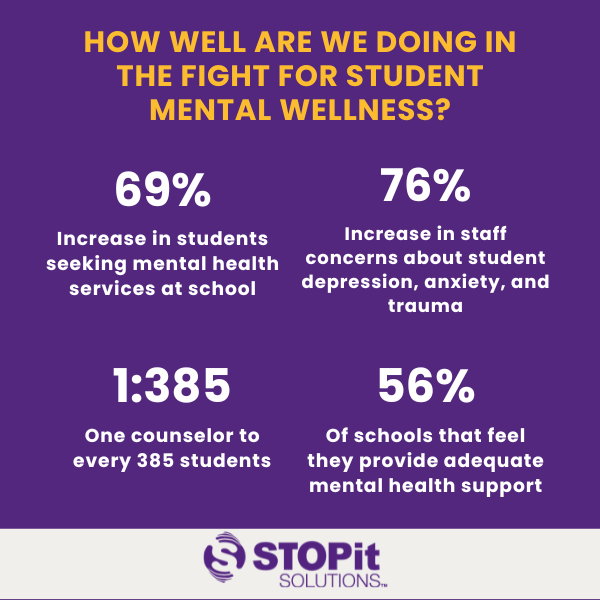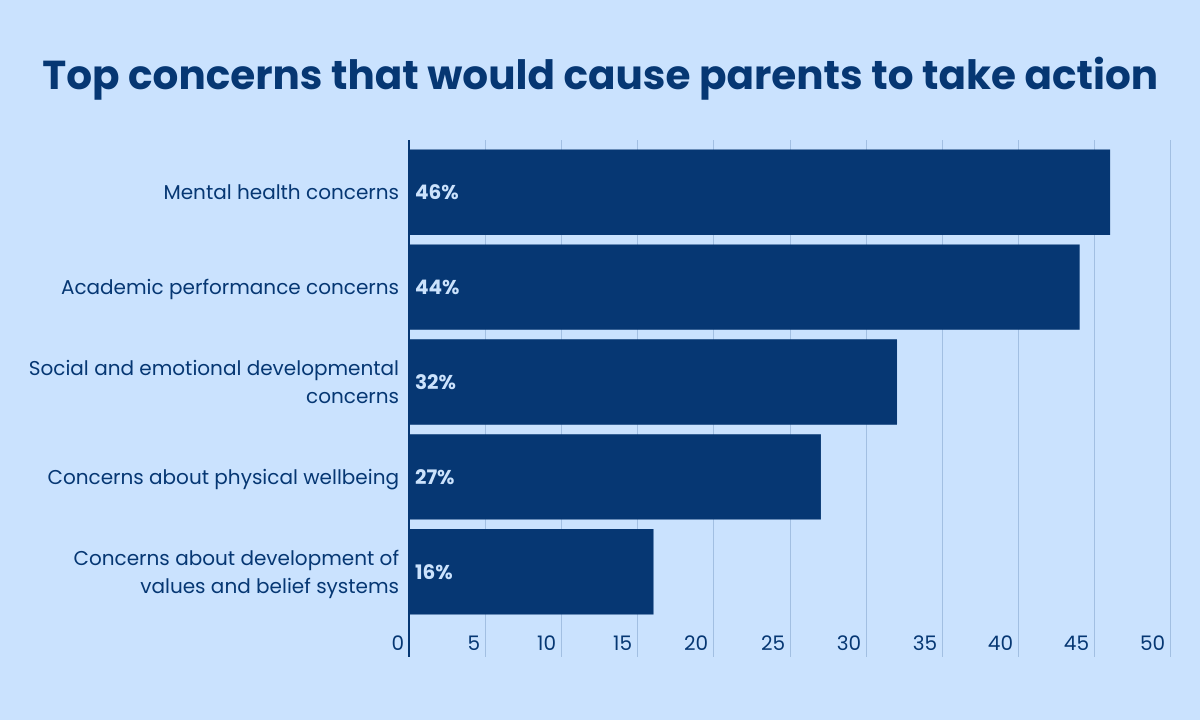Mental Health is a Cornerstone to a Safe and Thriving School
Every child deserves a school environment that promotes learning. Every teacher needs the right environment to teach effectively. The underpinning of an optimal learning environment is an atmosphere where students feel nurtured, valued, and safe—both physically and emotionally. Yet, in today’s world of school shootings, substance abuse, and soaring student suicide rates, how can we create a positive environment where effective learning can take place?
Increasingly, educators are focusing on the interconnectedness of mental health and school safety to create schools where students can thrive emotionally, physically, and academically. MTSS plays a major role in creating interconnectedness between mental health and school safety.
Connecting Student Mental Health with the School Environment
The relationship between mental health and learning is a two-way street. Undiagnosed and untreated mental health issues can lead to substance abuse, bullying, suicidal ideation, and a host of risky behaviors that impair safety and learning. At the same time, feeling unsafe can increase stress, depression, anxiety, and isolation—also impairing learning.
The inextricable link between mental health, school safety, and learning has led to the viewpoint that mental health is a cornerstone of a healthy school setting. Building this educational foundation requires looking at the school environment through a mental health lens.
We Need to Do Better
Here are some hard facts that indicate our need to prioritize mental health more.
 Source: Rise in students seeking support, Increased staff concerns, Low counselor-to-student ratio, Ability to provide support
Source: Rise in students seeking support, Increased staff concerns, Low counselor-to-student ratio, Ability to provide support
These figures speak volumes about the need to ramp up mental health support as a top priority for our schools. Students are crying out for help, teachers are seeing a direct impact in their classrooms, and schools cannot provide effective support in their current circumstances.
The Effect of Mental Health Support on School Enrollment
Adding mental health resources impacts a school’s bottom line. At the same time, the lack of mental health support also has financial implications, including lower enrollment. Public schools have seen large declines in K-12 student enrollment since the pandemic. With each student representing $10,000-15,000 in funding, enrollment numbers significantly impact resources available to students, schools, and the community.
Districts simply can’t afford to lose students. Many assume the prime motivator for enrollment decisions is academic, but that’s not the reality. A new survey from Tyton Partners found that mental health and academic concerns were the top reasons parents considered changing schools. Source

Creating a Comprehensive Culture of Mental Wellness
While there is no single solution to the intertwined challenges of student mental health, school safety, and improving academic outcomes, a successful approach would undoubtedly include support for individuals and promoting a school culture that emphasizes physical and psychological well-being.
While there is no single solution to the intertwined challenges of student mental health, school safety, and improving academic outcomes, a successful approach, like MTSS, would undoubtedly include support for individuals and promoting a school culture emphasizing physical and psychological well-being.
Multi-Tiered System of Supports (MTSS) plays a significant role in school safety by providing a comprehensive framework for delivering academic and behavioral support to students at varying levels of need.
Here's how MTSS contributes to school safety across its core components:
Preventive and Proactive Measures - MTSS emphasizes early identification and support for students who may be struggling academically, socially, or emotionally. By addressing issues before they escalate, MTSS serves as a preventive measure against potential safety concerns, such as bullying, violence, or self-harm. The framework's focus on universal screenings and interventions ensures that all students receive the support they need to succeed, reducing the likelihood of frustration or disengagement that can lead to unsafe behaviors.
Positive Behavioral Interventions and Supports (PBIS) -A key component of MTSS is PBIS, which focuses on creating a positive school environment by reinforcing good behavior, clear expectations, and consistent consequences for misbehavior. PBIS helps build a school culture where students feel valued and respected, which can significantly reduce incidents of aggression, bullying, and other safety concerns. Schools can create a safer, more inclusive environment for all students by promoting positive behavior.
Tiered Support System - MTSS provides a tiered framework for delivering support that ranges from universal interventions for all students (Tier 1) to targeted support for those at risk (Tier 2) and intensive interventions for students with significant needs (Tier 3). This approach ensures that resources are allocated efficiently and effectively, with the intensity of support matching the level of need. By offering targeted interventions, schools can address specific behaviors or emotional issues that might pose safety risks, ensuring that students receive the help they need to engage positively with their school community.
Integrated Support for Academic and Behavioral Needs - MTSS recognizes the interconnection between academic success and behavioral health. By integrating support for both areas, the framework ensures that students are holistically supported in their school experience. This comprehensive approach is crucial for school safety, as students who are struggling academically are often at higher risk for behavioral issues. Through integrated support, MTSS helps mitigate these risks, contributing to a safer school environment.
Data-Driven Decision Making - MTSS relies on data to inform decisions about interventions and supports. This data-driven approach ensures that the strategies implemented are based on evidence of what works, allowing schools to respond effectively to emerging safety concerns. By regularly monitoring student progress and adjusting interventions as needed, schools can proactively address issues that may impact safety, ensuring that all students can learn and grow in a secure environment.
Collaboration Among Stakeholders - MTSS fosters collaboration among teachers, administrators, students, and families. This collaborative approach ensures that all stakeholders are involved in creating a safe and supportive school environment. By working together, the school community can identify and address safety concerns more effectively, creating a shared responsibility for student well-being.
MTSS plays a pivotal role in school safety by establishing a structured, proactive framework for supporting students' academic and behavioral needs. Through its emphasis on preventive measures, positive behavior support, tiered interventions, integrated support, data-driven decision-making, and stakeholder collaboration, MTSS creates a safe, inclusive, and positive school climate where every student can thrive.
Reach out to a Trusted Partner in School Wellness and Safety Solutions
Prioritizing mental wellness is essential to building a physically and emotionally safe school environment where students can learn, connect, and reach their full potential. Districts can find a partner in creating a thriving school environment by contacting STOPit, a trusted partner in solutions that protect physical, social, and emotional wellbeing of those in your school community.



